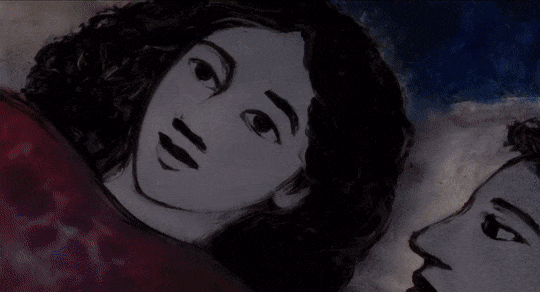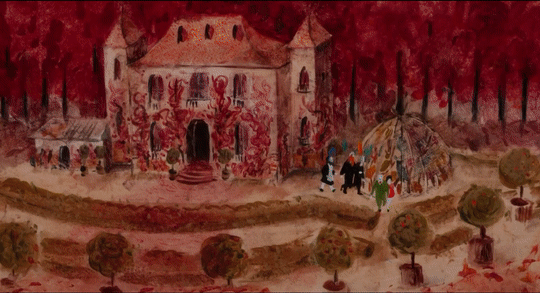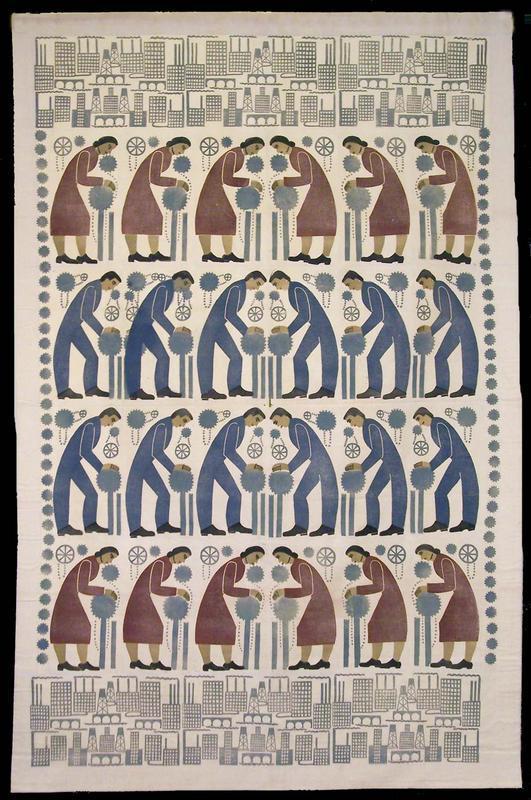#florence kawa
Text

The Workers, Florence Kawa (1935)
#done for the wpa federal art project#wikipedia says its was block printed on cotton weave#on the question of art#florence kawa#female artists
2 notes
·
View notes
Text






La traversée (2021)
dir. Florence Miailhe
A small village looted in darkness, a family forced to flee. The two oldest children, Kyona and Adriel are quickly separated from their parents facing the road of exile alone. They embark on a journey which takes them from childhood to adolescence in search of shelter, peace and the hope of finding refuge and their family.
The writing of the film began in 2006 at the Royal Abbey of Notre-Dame de Fontevraud , where Florence Miailhe was invited in residence by Xavier Kawa-Topor.
Florence Miailhe is inspired by her family history and the sketchbooks of her mother, the painter Mireille Miailhe , but also by the drama of today's migrants, notably documented by her husband, the photographer Patrick Zachmann.
The writing of the film began in 2006 at the Royal Abbey of Notre-Dame de Fontevraud , where Florence Miailhe was invited in residence by Xavier Kawa-Topor. It took producer Dora Benousilio ten years to gather the necessary funding, while developing the project.
The film is made in animated painting, a technique which Florence Miailhe has made a specialty of.
«A poignant odyssey of migrant children, as if straight out of a painting by Chagall» -- Télérama
#The Crossing 2021#La Traversée 2021#guys pls watch this film it's GREAT#migration#migrant children#illegal immigration#undocumented#animated films#animation#art#Florence Miailhe#films#film#french cinema#french film#French films#my french film festival#myfff
42 notes
·
View notes
Photo

Florence Kawa (artist, designer, and professor) began her career at the Milwaukee Handicraft Project, Federal Art Project, Works Progress Administration. This wall hanging, which depicts factories and working men and women, is one of three Kawa block prints found among Eleanor Roosevelt's belongings: https://fdr.artifacts.archives.gov/people/4509/florence-kathryn-kawa/objects
#women's history month#wpa#the new deal#new deal art#1930s#block print#milwaukee#wisconsin#art of tumblr#museum from home#archives at home#at home with the roosevelts#museum collection#artifacts
9 notes
·
View notes
Text
Kelimutu
Kelimutu
Kelimutu (English: Kelimutu) is a volcanic eruption in Indonesia. It is located near the town of Moni in the middle of the island of Florence. The volcano is about 50 km east of the Andean capital, Ende. There are 3 volcanic lakes in the mountain with different colors. There is a scientific reason behind the color of the cave lake in Kelimutu. The lake is rich in iron and manganese, which are found in large quantities, and the color of the lakes also changes from time to time with the oxidation-decomposition process of these liquids. The state of oxidation and degradation depends on the amount of volatile gas, rainfall, and the amount of groundwater in the volcano that plays a role in this. The colors of each lake are different, their color does not depend on the color of the others, and each lake is uniquely connected to the underground system of volcanoes. Between January and November 2016, the color of the cave lakes changed six times. It is not easy to predict the change in color. It is difficult to monitor the volcano system and collect data from it. This color change cannot be predicted because it cannot be analyzed by an estimation model in the absence of data. Geological data-- The volcano has three caves of different colors. Tiwu Ata Bupu (Old Lake) is the westernmost of the three lakes and is usually blue in color. Tiwu Ku Fai Nua Muri (Lake of Youth) and Tiwu Ata Polo (Sammohit Lake) are separated by a cave wall and the colors of these two lakes are green and red respectively. The color of the lakes changes color. Underground volcanoes and waterlogging in the eastern two lakes have resulted in more fluid and less fluid exchange. These lakes have in the past evaporated. The highest peak of all the volcanic systems is the 1639-meter-high Kelimutu. It is about 2 km north-west and southeast. The old volcano is located 3 km north of Kelido and 2 km south of Kelibara. Colorful lakes are a major tourist attraction. Kelimutu is of interest to geologists. Geologists are curious about the fact that three lakes contain different fluids of Thai origin in one mountain. According to officials at the Kelimutu National Park, the volcanic eruptions are caused by the salt and chemical reactions in the lakes. However, the oxidation-degradation process can be said to be a more accurate cause of such coloration. To the south of Bandung, in Java, there is a cave lake called Kawa Putih, which has a lot in common with the Kalimutu lakes.
Tourism-- In the early days of establishing the national park in the Kelimutu area, there were many quarrels and clashes with the locals. The situation has improved, and the management of the national park has improved as forest officials have improved relations with local residents. Mountains with a height of more than 1,000 meters are called Ribu in Indonesia, and Kelimutu is part of Indonesia's Ribu list. In 1915, B.C. Van Suktelen was a local Dutch army commander, and in 1929, Y.A. Tourists' interest in Kelimutu has grown since Baiman's writing.
0 notes
Text
It took me 24 hours of being here to feel jet-lagged. My second night here I was awake until 4:30, and last night I was awake until 2:30. On top of jet lag I have a little cold and I’m feeling like a dumb baby. All that to say, I took it pretty easy today, but I saw a lot of the city. Basically I just traipsed from one café to another, and saw some things in between.
(No photos today, because I’m feeling lazy. I’ll post extra photos next time.)
I woke up around 12:30 today. When I’m keeping regular hours I wake up between six and seven in the morning, typically; I hate sleeping late and my body is generally incapable of doing it. But since I’m sick I don’t feel well-rested. (Sorry I’m feeling so whiny today.) I woke up, ate some eggs in my apartment, then went to Massolit, an English bookstore and café. It’s a wonderful little spot and I will definitely go back; there was an “Impeach Trump” banner hanging on the wall.
Then I wandered toward the Old Town, stopping to hang around Jagiellonian University for a while. It was founded in 1364; Copernicus went there. I’m a sucker for medieval universities. Then I stopped for a while in Rynek Główny, the main square. There are a dozen museums and cool sites in this square, but I was honestly feeling too ill to do anything besides sit and drink tea. I guess I had a pretty boring day, but I read a lot of my book and saw a lot, so I wasn’t bored.
Every hour I spend here, the more I am convinced that Kraków is the Florence of Eastern Europe.
Some important words: dziękuję (djen-KOO-yeh) means thank you; kawa (KA-va) means coffee.
And here Kraków is pronounced KRA-kuff.
0 notes